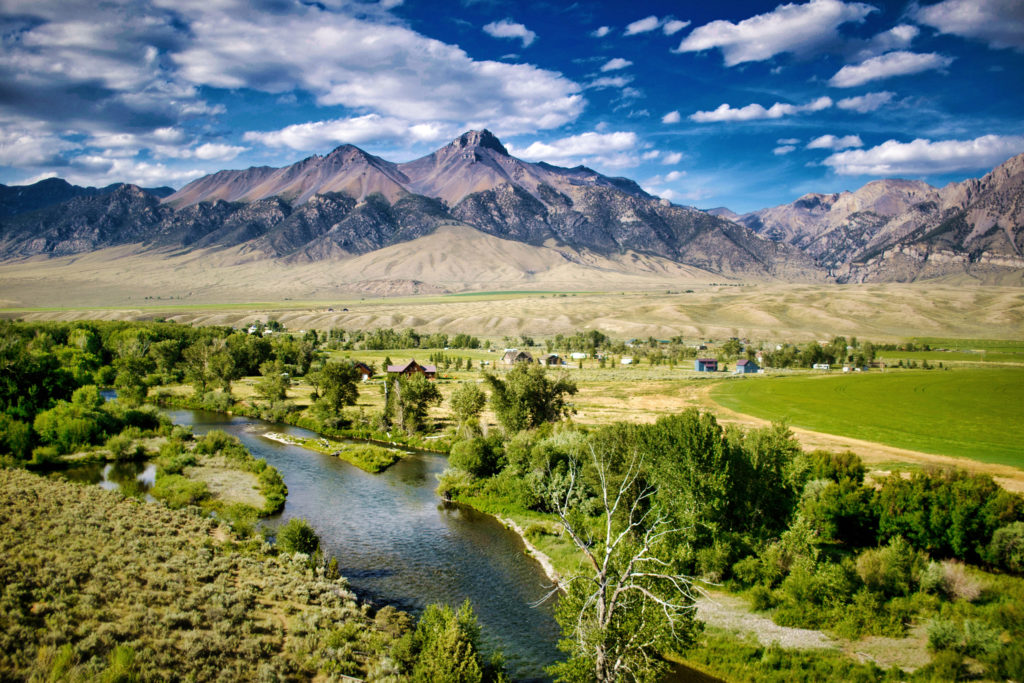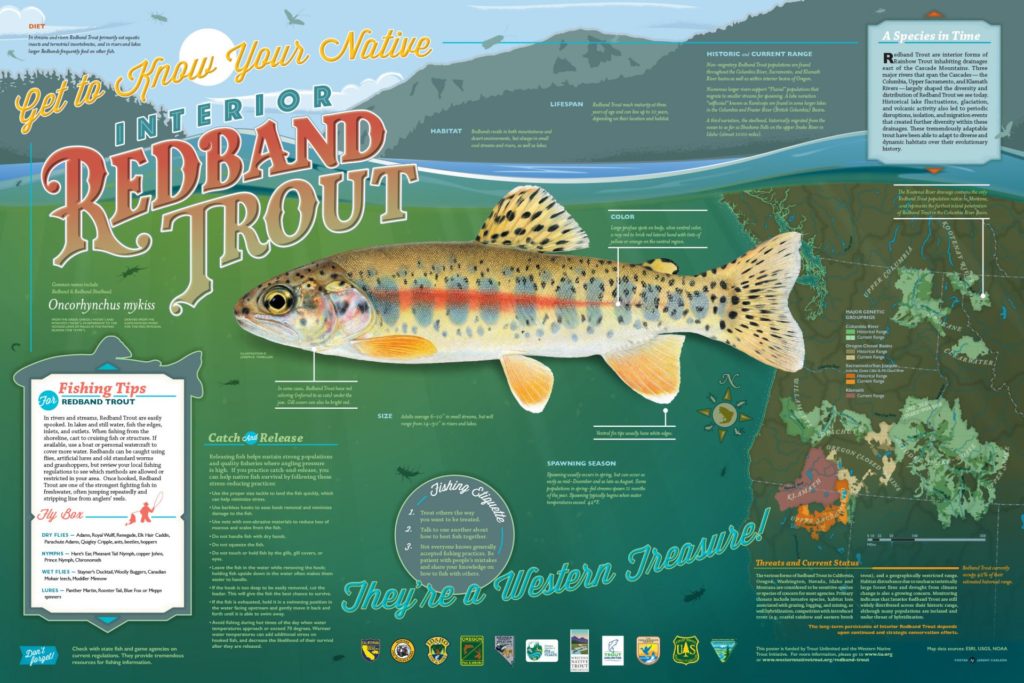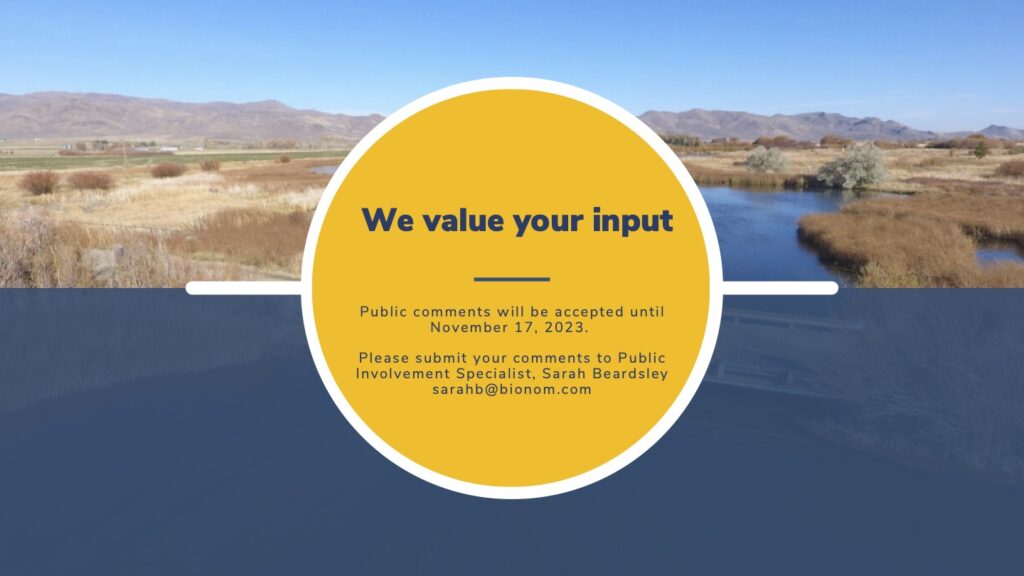Local anglers have long valued the Big Wood’s wild trout, but new evidence suggests they’re even more special: they likely represent a unique lineage of native redbands.
The Big Wood River flows through 137 miles of south-central Idaho, originating in the stunning Sawtooth Mountains and flowing through the resort towns of Ketchum, Sun Valley, and Bellevue. A Western freestone river, it offers excellent dry-fly fishing for rainbows. The headwaters offer classic small stream habitat, with many eager fish willing to hit attractors. The main stem offers excellent opportunities to match the hatch, especially in the summer and fall.
The entire watershed has excellent public access, even when it flows through resort neighborhoods in Ketchum and Hailey. For many anglers, a couple of days on the Big Wood can save a trip after frustrating experiences on Idaho’s more challenging waters like the Henry’s Fork and Silver Creek.
I often head to the Big Wood after a morning on Silver Creek, because I enjoy fishing attractors and, admittedly, to restore my ego. Casting an Elk-hair Caddis into pocketwater is refreshingly simple after a few hours of fishing with #22 Tricos.
Like many Idaho waters, the Big Wood was once heavily stocked. Between 1913 and 2000, more than 80 million rainbow trout were released in the river. Most of these originated from California hatchery strains. While the main stem of the river hasn’t been stocked with fertile trout since the 1990s, most assume the river’s wild fish trace their origins back to hatcheries. Some questioned whether rainbow trout were ever native to the Wood River watershed in the first place.
One of those skeptics was Matthew Campbell, fisheries genetics program coordinator for Idaho Fish and Game. Campbell’s state-of-the-art lab in Eagle, Idaho, primarily focuses on the genetics of Idaho’s anadromous salmon and steelhead. But he also pursues other research, including the origins of Wood River’s rainbow trout. Hypotheses and rumors about these fish have circulated for decades.
This confusion has in part been abetted by the names used by anglers and others. “People have always put names to fish, but haven’t always been consistent,” says Campbell. “In the early 1900s, there was a lot of confusion about what a rainbow trout was and what a redband trout was.”
Steelhead are rainbow trout that migrate to the ocean and back, whereas the term “redband” typically applies to rainbow trout that remain residents in streams. In Idaho, all rainbow trout (Oncorhynchus mykiss) share similar genetics, what is commonly called the “interior redband” lineage. Most hatchery fish trace their origins to California and the Pacific Northwest, which is another lineage, called the “coastal rainbow.”
“If you saw evidence of coastal genes in Idaho rainbow trout, you assumed it was evidence of hatchery stocking,” says Campbell.
Numerous genetic investigations conducted on Wood River trout over the last 30 years, using a variety of genetic markers, found genetics similar to coastal rainbow trout. This was regarded as evidence of significant hatchery influence.
“Everything we sampled looked heavily influenced by coastal hatchery lineages,” says Campbell. “Our assumption was that every native redband in Idaho should look like an interior redband. These Wood River rainbows did not. We thought there were probably no pure fish left in the Wood River.”
Case closed? Not quite.
Nagging at Campbell, and other fish geneticists, were some historical hypotheses. The earliest surveys of the watershed identified the Wood River trout as cutthroats. The late trout expert Robert Behnke described Wood River rainbows as a relict form of redband trout, based on a single museum specimen. Clearly, questions about these fish remained unanswered.
Campbell looked at the swirling hypotheses and couldn’t find consensus. What exactly were the Wood River rainbows? Native fish? Hatchery descendants? A mix of the two? Something else?
In an attempt to answer this question, researchers greatly expanded the sampling and genetic screening completed on previous studies.
The latest research compared the trout to other native and hatchery rainbow trout genetics, as well as rainbows from the Henry’s Fork, where the trout are not native. And while there were similarities between Wood River’s rainbows and hatchery coastal rainbows, their genetic makeup was quite different.
The results were presented at the Wild Trout XIII Symposium . Basically, the paper concludes that redband trout were indeed native to the Wood River Basin, that many of the fish show very little sign of hatchery genetics, and the trout represent a unique, previously undescribed lineage of redband trout.
Campbell is quick to note that some trout in the basin do show signs of hatchery trout influence, particularly in the lower basin. In some headwaters, there are rainbow-cutthroat hybrids, likely due to stocking of cutts in high-mountain lakes. (This stocking is now transitioning to triploid cutthroats, which are unable to reproduce.)
But much of the Wood River Basin was and is home to a unique redband trout, presumably found nowhere else in the West.
How could this redband be so different from Idaho’s other native rainbow trout? The story of native trout in the Western United States is, so often, a story of geology.
The Wood River flows into the Malad River before joining the Snake River near the town of Hagerman. The Malad Gorge has a nearly 200-foot waterfall, impassable to fish except under the most extreme floods. This natural barrier may have existed for more than 60,000 years. (As an aside, the Malad Gorge itself is an underrated trout water, especially noted for its excellent dry-fly fishing all winter long.)
A population of redband trout may have become isolated above the waterfall, and remained so during the various floods and geologic changes that influenced other rainbow trout populations in Idaho.
And the uniqueness of the Wood River’s redband trout is similar to what is seen in other fishes in the watershed. The Wood River sculpin is found only in the basin. Mountain whitefish and bridgelip suckers found in the Wood River are also genetically different from other populations of these species.
“These fish have been isolated for a long time,” says Campbell. “And despite extensive stocking, introgression from nonnative hatchery rainbow trout of coastal origin appears to be limited.”
What about those 80 million trout stocked in the Wood River? It could be that these fish were not well adapted to local conditions and did not outcompete the native trout. As many were stocked when “catch and keep” was the norm, it could be that anglers quickly caught the stockers. Whatever the case, today’s Wood River redband trout are, largely, native and unique.
Idaho anglers have always regarded the Wood River as special. It’s a place to take novice anglers, as they can often fool a few trout on dry flies. There are great sections of the Wood River just a couple minutes’ drive from the area’s resort hotels. But you can also experience trout fishing in a wilderness setting, with jaw-dropping mountains as a backdrop.
The Wood River system faces similar challenges to many Western rivers, particularly drought and increased demand for water. But the river’s trout population remains robust. Fly fishers remain among the watershed’s most important allies.
A growing number of anglers have a passion for native trout, pursuing “cutt slams” and recording catches through initiatives like the Western Native Trout Challenge. This interest has highlighted the plight of native trout; most species and subspecies occupy only a fraction of their historic range. But the increased attention and research have also brought some welcome news. The greenback cutthroat, once declared extinct, isn’t. And anglers are now fishing for it in Colorado. Ditto for the San Juan cutthroat trout. The uniqueness of the Wood River redband is another new finding that offers hope for native fish.
I’ve written about Idaho conservation for more than two decades, and I’ve sat in the meetings where speakers noted that rainbow trout weren’t native to the Wood River. This was based on information that looked scientifically valid. But, as Campbell warns, you have to be careful about assumptions.
It turns out the Wood River redband trout should be considered a jewel of the Wood River, different from those found in any other river. “There’s something special about the Wood River drainage,” says Campbell. “I have been speaking to local angling groups about this research. They love this river and now they have another reason to be proud of what they have.”
November 21, 2023By Matthew L. Miller. **HTU does not own the rights and did not write the article
Original Article in the Fly Fisherman



